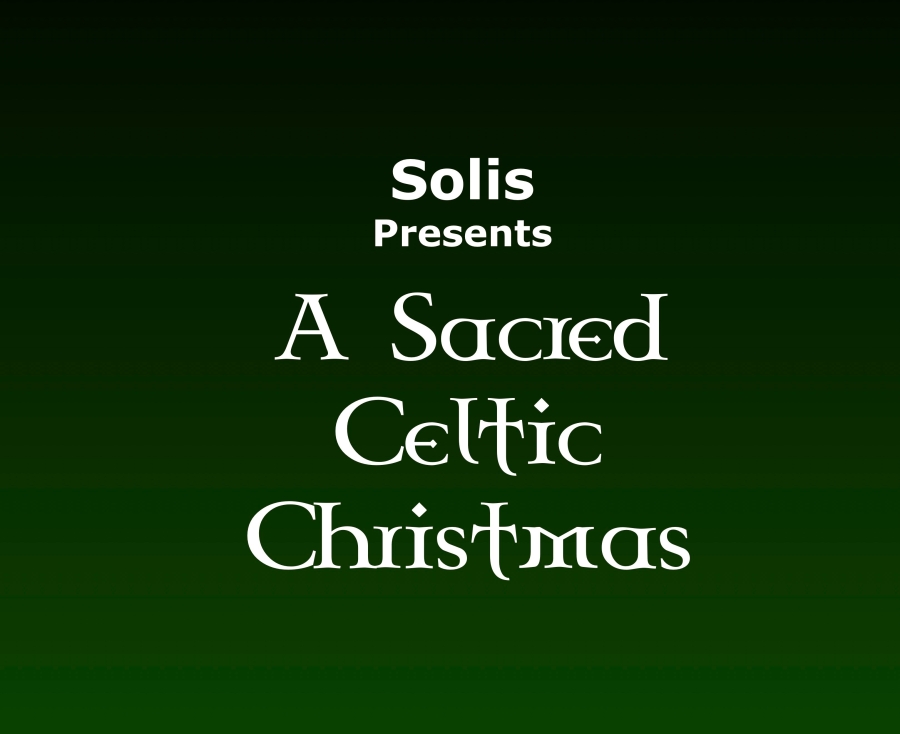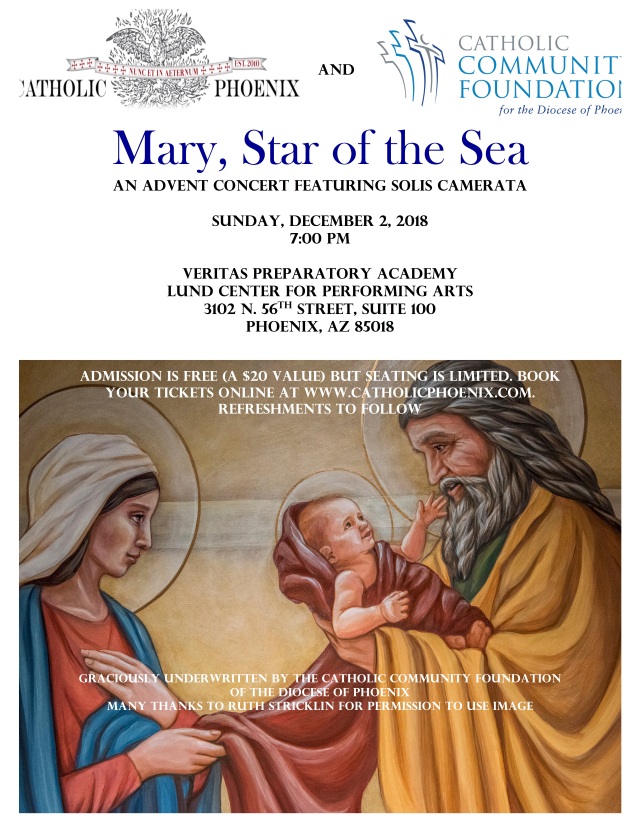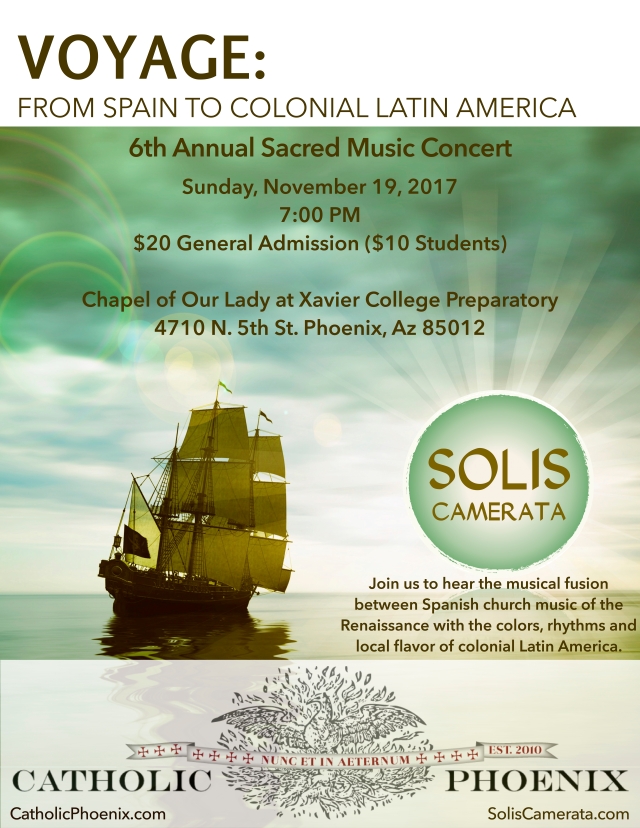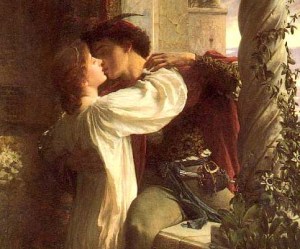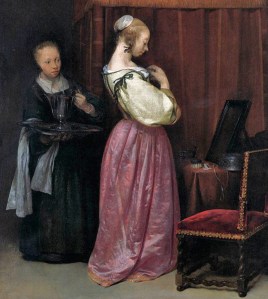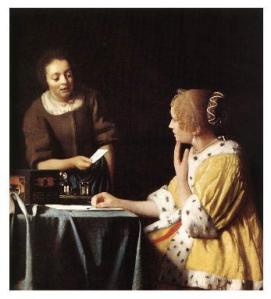
Reserve your FREE tickets here:
https://www.eventbrite.com/e/a-sacred-celtic-christmas-registration-78531027417
A Sacred Celtic Christmas
December 20, 2019 ~ St. Joan of Arc Catholic Church ~ 7:00 p.m.
Program Notes
Solis – Choir of the Sun
Who are the Celts?
The Celtic tribes originated in pre-Roman central, eastern, and western Europe. There is variation in the cultures of each Celtic region; however, a distinctive “Celtic-ness” can still be detected. The name ‘Celt’ comes from the Greek Keltos, which means “barbarian.” Similarly, the Roman name for a Celt, Gallus (later Gaul), also means “barbarian.” Both the Greeks and the Romans saw the Celts as warring tribes, and unfortunately, Roman victories caused much ancient Celtic culture to disappear. However, while Latin is now considered a dead language, several variants of Celtic languages are still spoken today. Celtic culture survived primarily through the widespread growth of Christianity. The Celtic tribes were heavily inspired by early Christianity and became passionate missionaries for their newfound religion. They migrated and settled in multiple areas of Europe, sharing the gospel to far-reaching lands. Today several regions are considered Celtic because of their language, traditions, culture, and music: Ireland, Scotland, Cornwall, Manx Island, Wales, Brittany, and Spanish Galicia (Basque and Catalan regions), with some pockets of Celts having moved into Iceland, Canada, and America. Celtic music is now a worldwide phenomenon, having been spread by such groups as the Chieftains, Riverdance, Celtic Women, and Anúna. Christmas music is often at the heart of the Celts’ well-loved tunes, and we are happy to share these ancient and traditional carols with you tonight.
Scotland
Balulalow, Medieval Scottish
Balulalow has a varied history. Martin Luther wrote the Christmas Eve carol Von Himmel Hoch, da Komm ich Her, published in the 1535 volume Geistliche Lieder. An English translation version of the carol, called I come from Hevin to tell, appeared in a 1567 publication by the Scottish Wedderburn brothers called Ane Compendious Buik of Godly and Spirituall Sangis. Now the tune is known as Balulalow, the Scottish term for the word “Lullaby.” The ancient carol has been set and passed down with a number of variants of melody, most famous being the rendition by Benjamin Britten in his Ceremony of Carols. Tonight we present the oldest published version of the Scottish medieval melody, alongside a similar but more modern version.
Jerusalem, Our Happy Home, Medieval Scottish
This Scottish Christmas chant is historically sung at the first Mass on Twelfth Day. The original version of the song is attributed to Friar Richard Shann’s transcription. The song was published in the year 1611 in The Commonplace Book, which is now housed in the British Museum. There is evidence that a Father Beenet, a Franciscan martyr and prisoner during the reign of Queen Elizabeth in the sixteenth century, originally wrote Jerusalem, Our Happy Home. The carol can also be found in the book The Kilmore Carols.
Suantraí ár Slánaitheora, Scottish Christmas Carol, arr. F. O’Carroll
In the Celtic tradition of singing a cradlesong (or sleeping song), mothers sing of brighter futures and loftier dreams than the circumstances in which they currently live. Often these lullabies will beseech the love and protection of Mother Mary as a way to comfort the mothers and the child who sleeps. In this Christmas lullaby, Mary herself sings to her Babe of the adoration she has for Him, and how she will be there with Him in His holy journey. Originally from Wexford and Waterford, Ireland, composer Fiontán Ó Cearbhaill worked as a railway clerk in Ireland for twenty-seven years before earning his degree in music through evening courses at Trinity College Dublin. Most of his compositions encompassed sacred music for the Roman Catholic Church. He took this traditional Scottish Christmas carol, Suantraí ár Slánaitheora (The Savior’s Lullaby), a lullaby from Mary to her child, and created a haunting arrangement for unaccompanied choir and soprano solo.
O Sing a Song of Bethlehem (Dives and Lazarus), Ancient Celtic Carol
Utilized as the tune for Dives and Lazarus, Kingsfold, and Star of the County Down, this old song has had a number of renditions, including an orchestral version by Ralph Vaughan Williams. The Christmas version of this carol is called O Sing a Song of Bethlehem. The tune could come from Worcestershire, Norfolk, or Ireland, although many claim Scotland as its origin. Celtic musicians now perform the tune regularly as a gorgeous addition to Christmas programs and albums. Enjoy our guest, Danielle Franlkin, as she shares her rendition of this ancient melody on her beloved harp, an instrument highly valued in Celtic music.
Cornwall
Sans Day Carol, Thomas Beard
St. Day, also called Sans Day, is the name of a city in Gwennap parish, Cornwall. The city, St. Day, was named after a venerated Breton saint who came to the region from Brittany. Historically, there have always been close ties between Brittany and Cornwall. Legend says that this Cornish carol comes from a nineteenth-century villager, Thomas Beard, who sang the tune and lyrics in celebration of Christmas. The lyrics are quite similar to the more familiar The Holly and the Ivy, and is likely related in melody and poetry. The text illuminates the medieval custom of decorating for the Mid-Winter Festival with evergreen plants. The tradition may come from a much older time, perhaps even reaching the ancient Celtic tribal era of pre-Saxon Yule celebrations.
Preview of Solis’ new album (to be released in 2020)
O Salutaris Hostia – World Premiere, Richard Quesnel
In November 2017, Kira Rugen traveled to Saint-Brieuc, France for the premiere of her Magnificat, sung by the Petits Chanteurs of Saint-Brieuc Cathédrale. During that St. Cecilia concert, the choir also sang O Salutaris Hostia, a hauntingly beautiful unison motet by Richard Quesnel. Dr. Rugen contacted Mr. Quesnel about including this song on tonight’s Celtic Christmas program, and inquired if he had already composed it for SATB (harmony in four parts). While he had not arranged the pieces for SATB, he told her that it was this simple setting of O Salutaris Hostia that has been one of his most sung works. He gladly made a new arrangement for Solis, which we recorded last month for our upcoming album, to be released in 2020. Please enjoy this world premiere, which comes from a Eucharistic hymn written by St. Thomas Aquinas.
Evening Hymn – World Premiere, Tom Peterson
Evening Hymn: Lux Aeterna sets to music portion of a poem by Cecil Frances Alexander, an Irish hymn writer whose classics still sung widely include All Things Bright and Beautiful and Once in Royal David’s City. In this piece, a soloist sings of the closing of another day and the onset of another night, while the choir recites the words lux aeterna (eternal light) again and again. The constant repetitions, like waves or breaths, mirror the constant cycle in the poem: of day turning to night, of night turning to day, of year passing into year, and finally, of generation passing into generation. Through all of these beginnings and endings, it is the permanence of the stars – the eternal light – that links parent to child, and night to night. It links the narrator – and us – to the night of the Nativity. This piece is dedicated to my grandmother, Olga. She has been gone for 19 years now, but I often find her in my thoughts, especially around Christmas. -Written by Tom Peterson, composer of Evening Hymn
Brittany, France
Kanam Nouel, 16th Century Breton Christmas Carol
The original melody of Kanamb Noël is based on an aire taken from a book for Renaissance viols. Historically, Breton children traveled from home to home singing this song as a part of their Christmas tradition. Eventually, the carol became one of the most favored Christmas tunes in the area of Brittany, France.
The Breton Carol – World Premiere, arranged by Goulven Airault
The Breton Carol (Pe Trouz War an Douar) is a very old Breton song, written in 1743 by Father Pierre Noury, a Breton priest. Over the years, it has become a popular carol in Brittany. As a young child, I attended Christmas Mass, and we sang it as a Breton story. I have composed this piece with that story in mind: As the shepherds in the Breton countryside sang the carol, they could hear the song of angels through the words Gloria in Excelsis Deo. However, the Shepherds did not yet understand the meaning of this song of joy. Fearlessly, the Shepherds asked the angels the reason for their jubilation. The angels then joined in the Shepherds’ song, in the Breton language, to explain the story. Behold, their hearts were then filled with great joy! They announced the news to all who would hear, and the angels adapted their glorious melodies to the Shepherds’ song. -Written by Goulven Airault, composer of The Breton Carol
Spanish Galacia
Fum Fum Fum, 16th Century Villancico
This Catalan carol comes from the sixteenth century, and is made famous by its repeated text of “fum, fum, fum.” There are a number of sources that say the words could just be onomatopoeia, imitating the noise of a rocking cradle, or nonsense syllables that articulate the rhythms a guitar or drum played for certain courtly dances that originate in Catalonia. Still, other sources say that the word “fum” simply refers to the smoke rising from a seasonal fire and seen from a distance. It is now a classic Christmas tune, sung around the world.
El Cant Dels Ocells, Traditional Catalogne, arranged Pablo Casals, Oriol Martorell
This traditional Catalan folk Christmas lullaby literally translates to “Song of the Birds.” The text is similar to the Irish Curoo, Curoo, as it describes the birds’ joy upon learning of Jesus’ birth. The famous exiled Catalonian composer and cellist, Pablo Casals, made this haunting tune famous by playing it fervently at the start of every concert as a show of support for the Spanish Republican government. Casals vowed not to return to his home country until the Republican government returned to power, and he refused to perform in countries that recognized the Francoist Spanish government. Two years after his death, when the Francoist state ended, the Spanish government posthumously honored him for his politically outspoken beliefs on Spanish freedom. The earliest notation of the carol comes from the early seventeenth century, a tune that may be older than the lyrics. Some speculate that it may have come from a Catalan Sephardic origin.
The Angel Gabriel Came Down, 14th Century, arranged by David Willcocks
This medieval tune may be based on the carol Angelus ad Virginem. The text is about the Annunciation, when the angel Gabriel tells Mary that she will give birth to the son of God, and comes from a portion of the Magnificat found in Luke 1:26-38. The tunes and words were written on a fourteenth-century minstrel manuscript from the Basque region of Spain, an area founded by Celtic tribes. This Basque carol, known in the native language as Birjina gaztettobat zegoen, was collected by the French teacher and composer, Charles Bordes, in Archives de la tradition Basque (1895). Later, the English Reverend Sabine Baring-Gould (the composer of Onward, Christian Soldiers) penned the English text.
Riu, Riu, Chiu, 16th Century Villancico, Mateo Flecha el Viejo
Attributed to Catalan composer Mateo Fletcha, this sixteenth-century villancico has been a well-loved Christmas favorite for centuries. In the Catalan language, Riu means ‘river’ and Chiu means ‘close’ – directly translated the song title means nearby river. However, the repeated use of the words Riu, Riu, Chiu is meant to sound like the call of a nightingale. The melody is rhythmic and colorful against the antiphonal refrain sung by the chorus. In the text, the white lamb symbolizes the Mother of Christ, while the wolf symbolizes the devil. The hymn tells the story of the role of Mary from the Immaculate Conception to the Incarnation.
Ireland
Curoo, Curoo (Carol of the Birds), Irish Christmas Carol, by Elaine Agnew
Recently made famous the sixties band the Clancy Brothers and the stories of Hans Christian Anderson, Curoo, Curoo actually dates from the eighteenth century. The text of the song translates directly as “the holiday melodies of the birds”, and it tells the story of the many birds that witnessed Jesus’ birth while shepherds knelt to adore Him and angels sang to His glory.
Lute Book Lullaby, Traditional Irish, arranged by Geoffrey Shaw
William Ballet originally wrote this as a solo song with lute accompaniment in the early seventeenth century and called it Lullaby for the Christ Child. The Ballet Lute Book, where the carol was originally published, also included many other famous Irish tunes that date back to the Elizabethan period. The manuscript is now housed at Trinity College Dublin, alongside the Book of Kells. In the 1920s, Geoffrey Shaw found the carol, then transcribed and arranged it for The Oxford Book of Carols. Since then, the piece has been performed multiple times by The Choir of King’s College at Cambridge for their Festival of Nine Lessons and Carols.
Pie Jesu, by Michael McGlynn
Irish composer Michael McGlynn, who founded Anúna, composed this setting of Pie Jesu. The words Pie Jesu Domine, dona eis requiem translate to “Merciful Jesus, grant them everlasting rest.” This simple setting is a worldwide favorite during the holiday season for its simple, unadorned adoration of Jesus Christ and tranquil, moving melodic lines. On Michael McGlynn’s website, he states that the song was “written in memory of those who died in the Troubles of Northern Ireland, this sublime setting of the Requiem text has a soaring and dramatic solo line in its third statement.”
Audience Sing-Along:
Once in Royal David’s City, by Henry Gauntlett/Cecil Alexander
This carol became famous due to Dr. Arthur Henry Mann’s arrangement being sung every year as a part of the annual Festival of Nine Lessons and Carols at King’s Chapel in Cambridge, England. However, its origin is Irish in nature. Mrs. Cecil Frances Alexander, an Irish Anglican bishop’s wife, wrote a collection of poems and hymns in 1848 entitled Hymns for Little Children. Later, English organist Henry Gauntlett wrote the now recognizable melody for Once in Royal David’s City, in which the lyrics illustrate the words of the Apostles’ Creed, an early statement of Christian belief. Sing with us on this noble carol!
Away in a Manger, William Kirkpatrick, arranged by Ola Gjielo
This gentle carol does not come from one of the Celtic regions. Rather, its origin and first publication occurred in the United States. The first printing can be found in a book published in 1885 called Little Children’s Book for Schools and Families. Yet, the history of the carol was mired in obscurity for years, with the song sometimes being attributed to Martin Luther and various American composers. Scholars now believe that the melody you will hear tonight was composed by William Kirkpatrick, who was born in the parish of Errigal, Keerogue, County Tyrone in Ireland. He moved to the United States in 1854, at a time of great immigration from Ireland to the U.S., settling in Pennsylvania to work as a professional musician and composer. Away in a Manger is arguably America’s first Celtic Christmas carol. We invite you to watch the conductor to sing along with Ola Gjielo’s version of this timeless carol!
Hallelujah Chorus, George Frederic Handel
In 1741, Handel was in significant debt. With his career in dire straits, he feared he would be forced into debtors’ prison. However, Handel received funds from several charities in Dublin, Ireland to compose a new work from a text written by Charles Jennens. That text, which we now know as the words to the Messiah, was based on lessons from the Bible about the life of Jesus Christ. On August 22, 1741, Handel began composing the Messiah, and on September 14, twenty-four days later, he completed the work. When speaking afterward about composing the song Hallelujah, he said: “I did think I did see all Heaven before me, and the great God Himself seated on His throne, with His company of Angels.” The premiere of the Messiah occurred in Dublin on April 13, 1742. By tradition, people stand during the Hallelujah chorus. Many say it started because King George II, so moved by the piece, rose to his feet in awe, and so too did the entire audience. However, there the story cannot be proven true, as there is no evidence that the king even attended the concert in Dublin. Nevertheless, it’s a good excuse to stand, stretch your legs and join us in voice for George Frederick Handel’s Hallelujah Chorus!
The Wexford Carol World Premiere, arranged by Kira Z. Rugen
On a rainy Christmas evening in December 2012, Kira Rugen sat down with her musician friend from Northern Ireland, Joel Cathcart, to play through a few tunes for their upcoming concert. On a whim, they scratched out, improvised, and wrote the basic form of this arrangement. With Joel on guitar and Kira singing, they made a simple recording of this famous tune. Kira always loved the simple recording and decided to write a choral octavo based on hers and Joel’s collaboration. The Wexford Carol, also known as the Enniscorthy Carol, is named for Wexford county, Ireland. It is one of the most well known Christmas carols from the Emerald Isle. With a melody in a Mixolydian mode, the haunting Celtic tune was likely passed down through an oral tradition over the centuries, perhaps dating back to the twelfth century. It has long been associated with Bishop Luke Waddings 1684 publication of The Kilmore Carols. In the nineteenth century, writers added the familiar text, “Good people all this Christmas time.” The text tells the story of the Nativity, from Mary and Joseph’s journey to Bethlehem, through the visitation of wise men, shepherds, and angels.
*Notes written by Kira Z. Rugen

